One of the main tourist attractions of the Italian Riviera actually lies a few miles further inland: no visit to this stretch of the Mediterranean coast would be complete without a trip to at least one of the Ligurian mountain villages with their narrow lanes and dark cobbled alleyways.
Ligurian Mountain Villages
Ten or twenty minutes away from the hustle and bustle of coastal resorts between Ventimiglia and Alassio, you will enter a different world, one that is withdrawn and introspective rather than brash, loud and (sometimes) not a little vulgar.
Welcome to a different type of Italy in the Ligurian mountain villages.
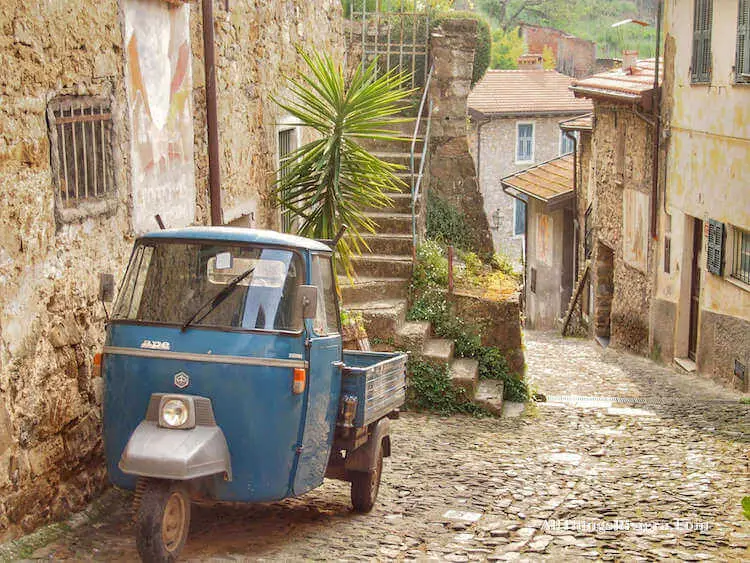
These mountain villages are also different from one another, although their differences may be subtle, and the perfect village would combine all of their various charms.
Great views of the surrounding, optically ravishing countryside, whitewashed stone walls that appear to grow organically out of rocky cliffs, romantic isolation, good traffic connections and attractive little shops and restaurants.
Unfortunately, you will not find all of those qualities in one place: partly because some of them are mutually exclusive, but also partly because life just does not work that way. Which means: even if you could, in theory, find the perfect Ligurian mountain village, in practice you won’t.
Today’s post about the most frequently visited Ligurian villages is designed to help you a little in making up your mind.
Dolceacqua
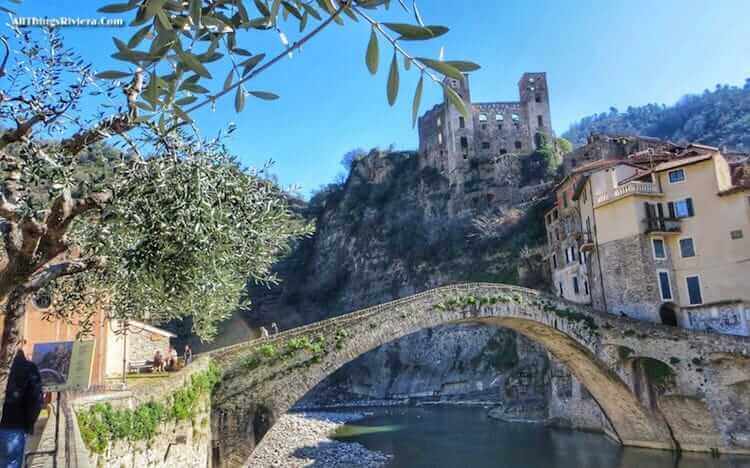
Why you should go:
It is optically attractive (with a skyline that features a medieval castle and a bridge that was painted by Claude Monet) and historically important as one of the Doria family’s key strongholds outside Genoa.
That is one of Dolceacqua’s “unique selling points” (the other villages on our shortlist derive their charm from the fact that they appear to exist outside of history, having been by-passed by at least the 20th century).
Here are two more: it is easily accessible (with a good road and a relatively frequent bus service from Ventimiglia) and offers a rather wide choice of bars, shops and restaurants.
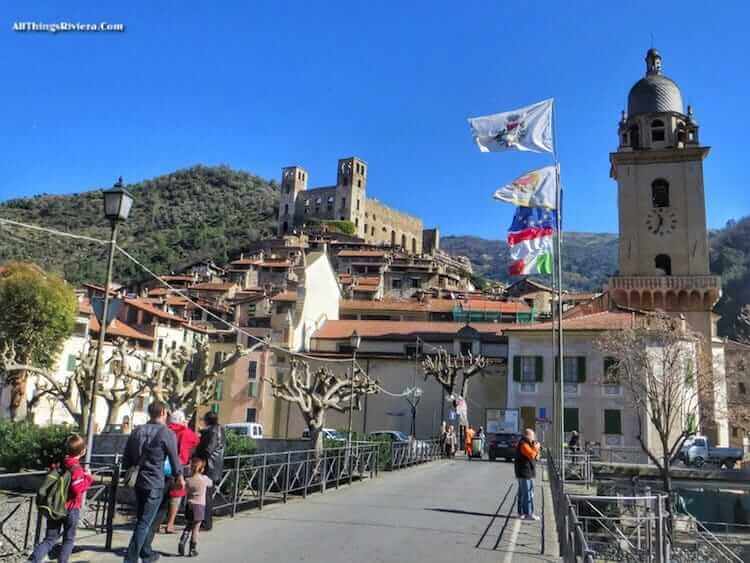
Drawbacks:
Dolceacqua may be the most lively village of the lot, but it is also the least “typical”. Part of the fascination of the Ligurian mountain villages, after all, is the contrast they provide to the coastal resorts.
In the summer, Dolceacqua often attracts so many day trippers that it feels like a continuation of the seaside by other means. Also note that Dolceacqua (elevation: 51 metres) is a mountain village only inasmuch as it is surrounded by mountains. There are consequently no spectacular 360° views either.
Perinaldo

Why you should go:
At 560 meters above sea level, Perinaldo is not the highest village on this list, but it is high enough for some excellent views with the sea on one side, the first Alpine peaks in the distance, and green rolling hills in between.
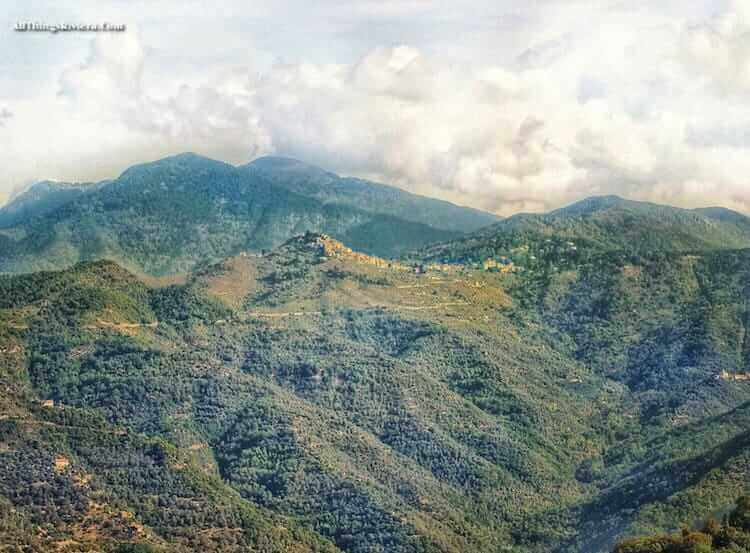
It is also relatively large, with a population of nearly 1000 people. (100 years ago, Perinaldo counted twice as many, and most of the houses in which these people lived are still standing). There is more to Perinaldo than meets the eye, in more ways than one.
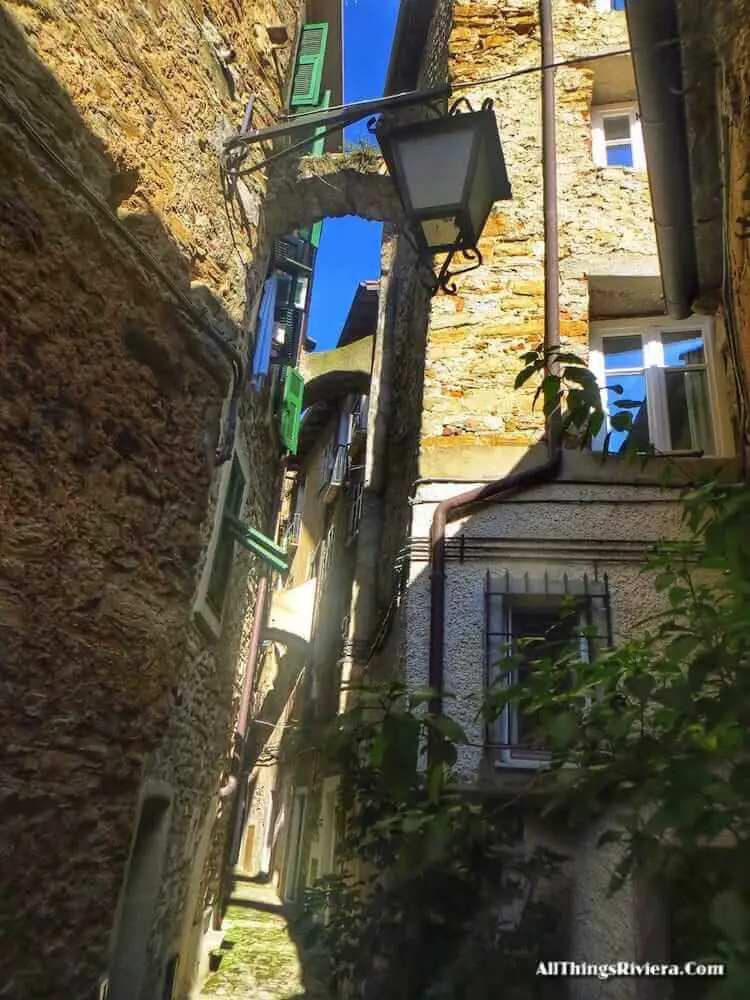
Drawbacks:
Perinaldo is a little too far off the coast to attract large numbers of foreign second-home owners (who have done a lot to revive many other Ligurian villages) and can feel a bit lonely and abandoned, even by hilltop village standards. Whether you find this level of isolation romantic or slightly depressing is ultimately a question of temperament.
Pigna

Why you should go:
When you travel to Pigna, you get two Ligurian mountain villages for the price of one: Pigna down in the valley and Castel Vittorio up on the rock …
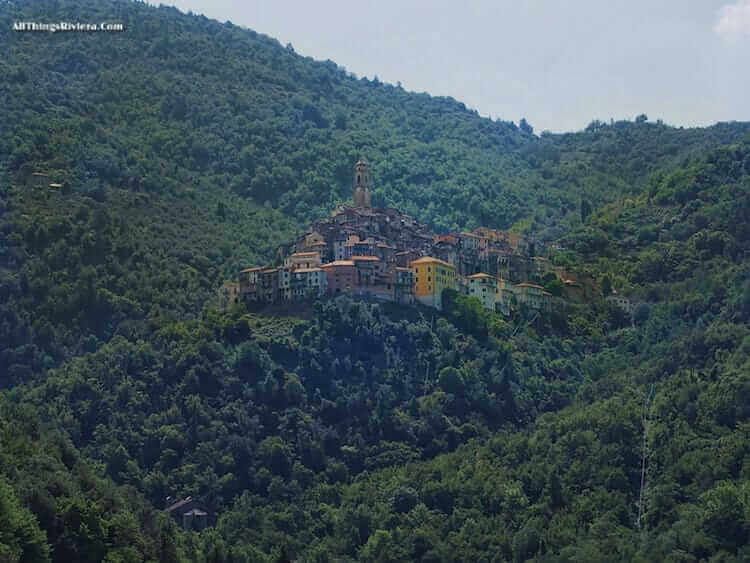
… which feels like a proper hilltop town and gives you the opportunity of throwing in a short walk between the two (a gentle downhill stroll, if you visit Castel Vittorio first).
You could even count “three for the price of one”, since some sort of a New Town has been added to Pigna’s Old Town, which may be small – it does not, in effect, feature much more than a single street – but which gives the town a relatively lively feel.
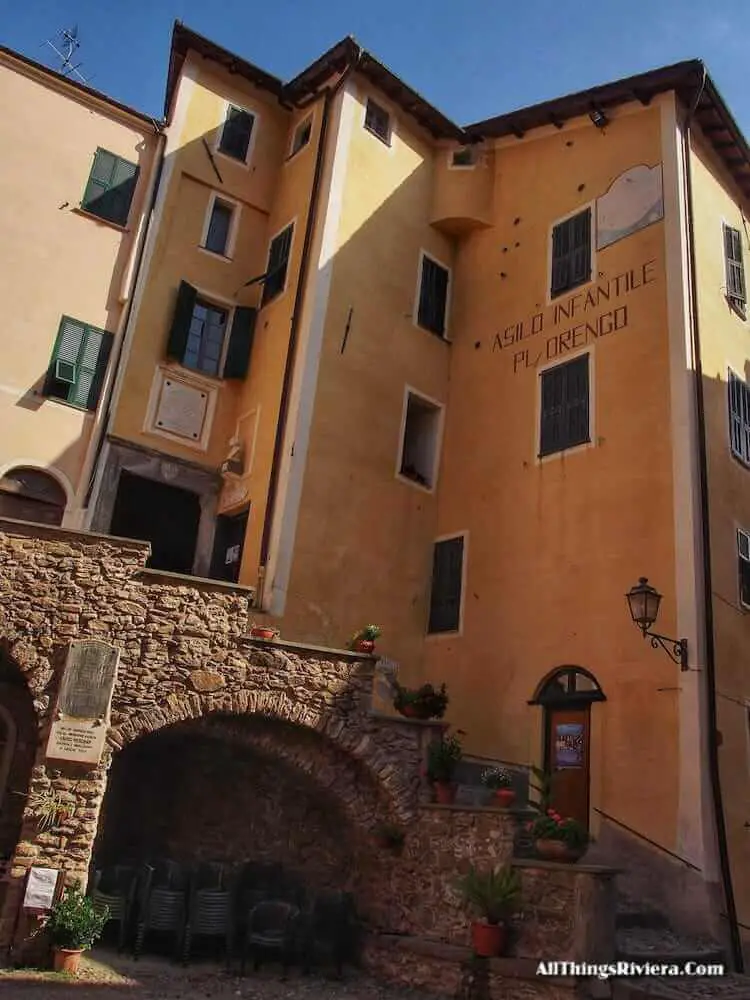
Drawbacks:
Getting there involves a long and awkward trip (60 minutes by bus to Castel Vittorio). The bus schedule – with only one afternoon departure back to Ventimiglia at 1500 – is also poorly adapted to the needs of visitors. If you plan to travel with your own car, be ready for the challenges of some extremely narrow Italian mountain roads: if two cars meet, one of them must back up. This is a problem, however, you will encounter on your way to most of the mountain villages (with the exception of Dolceacqua).
Baiardo
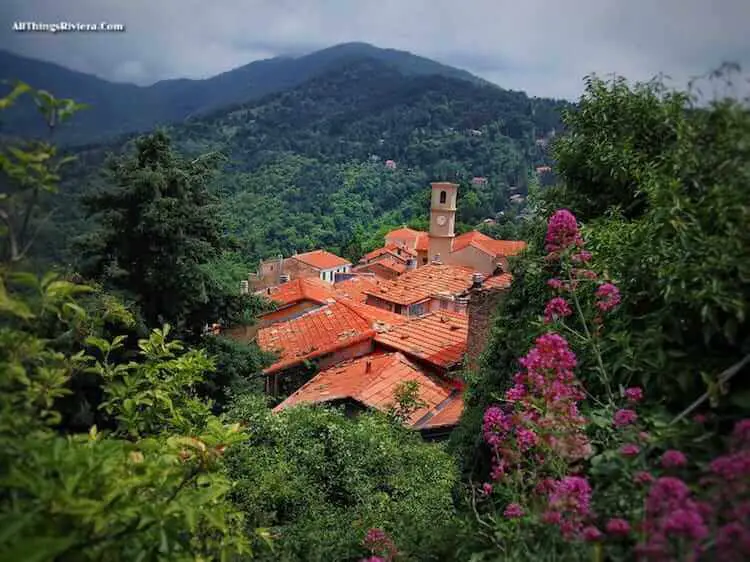
Why you should go:
Ligurian mountain villages may resemble each other fairly closely, but Baiardo has something the others do not have – a tragic back story and its spooky remains.
On the morning of 23 February 1887, half the village – after a night of merry carnival dancing – had congregated for the Ash Wednesday service, when an earthquake destroyed the church. 212 people died on that day.
Such a large number of fatalities would have been considered a catastrophe in any town, but in Baiardo, it meant that a quarter of the population had perished.
The ruined church still stands at the top of the modern village and lends a deep and dark melancholy to the place.
Also note that Baiardo, at 900 metres above sea level, has the distinction of being the highest of all Ligurian villages. The views from the ruined church are great.
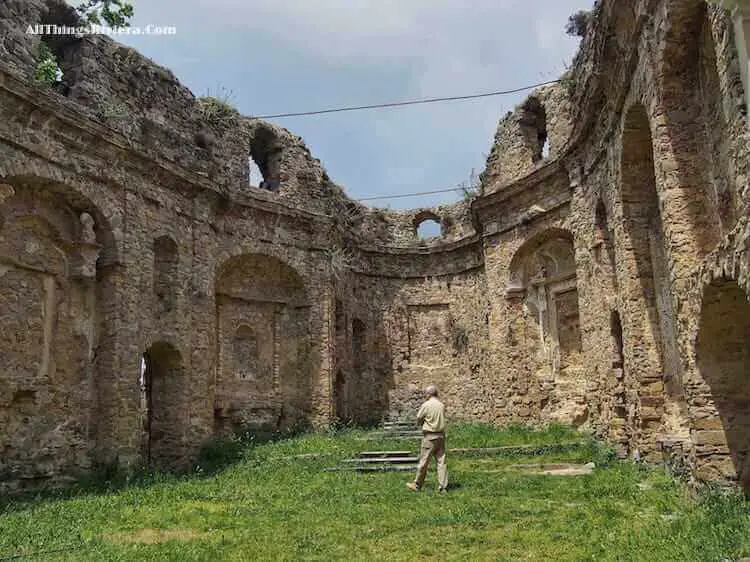
Drawbacks:
Baiardo is very small, with a population of 300 inhabitants, and other than the ruined church, there is not much to see. It is also a long way away from the coast, more than one hour by bus from Sanremo.
Apricale
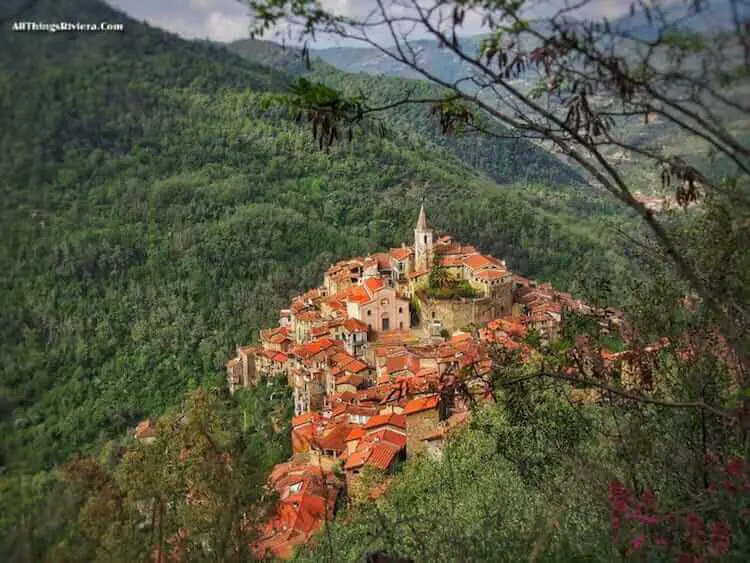
Why you should go:
The approach alone is worth the visit. Apricale is slouched like a sleek, slinky cat on the hillside, seemingly unsure of whether to purr playfully or to attack.
The village counts only 600 inhabitants but features many second homes, owned by foreigners as well as by wealthy Italians from Turin and Milan. Many of the medieval walls in the Old Town are graced by modern paintings, the results of a municipal art festival.
Overall, the town comes across as well-kept and prosperous.
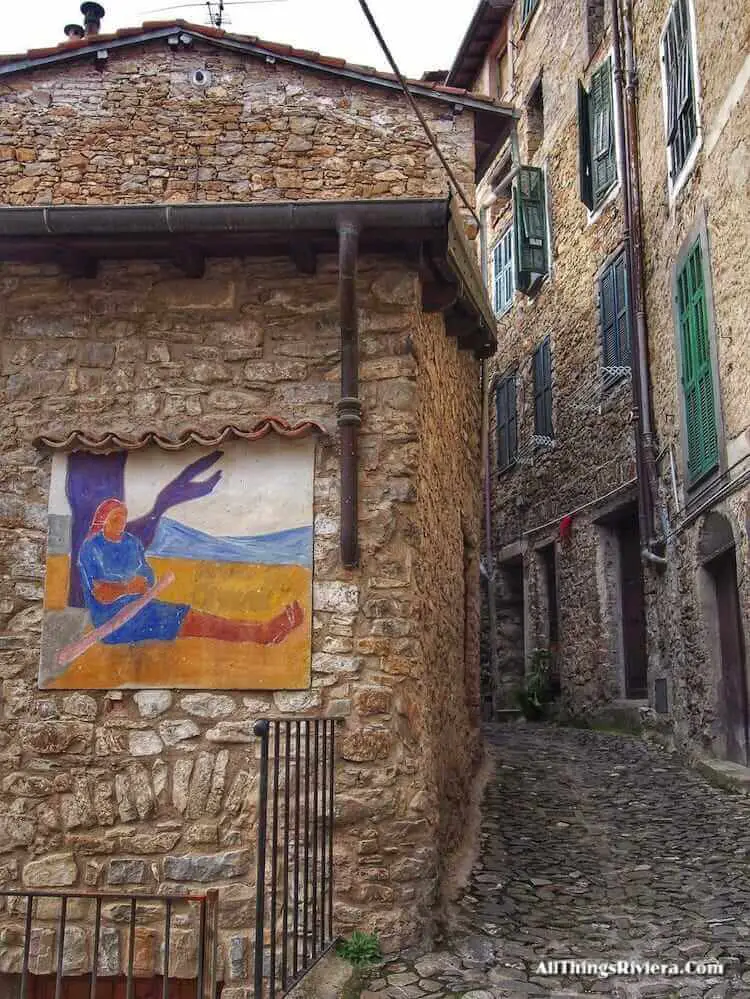
Drawbacks:
Parts of Apricale can feel a little claustrophobic. Dolceacqua has the same semi-underground passages which are illuminated by lamplight at all times of the day, but there, they are offset by the general air of liveliness in the main street.
Here, there is no such relief, and the overall effect can be a little gloomy. This is not helped by the weather: Apricale is located on the first major inland elevation from the coast, and clouds that drift in from the sea often settle here for the day.
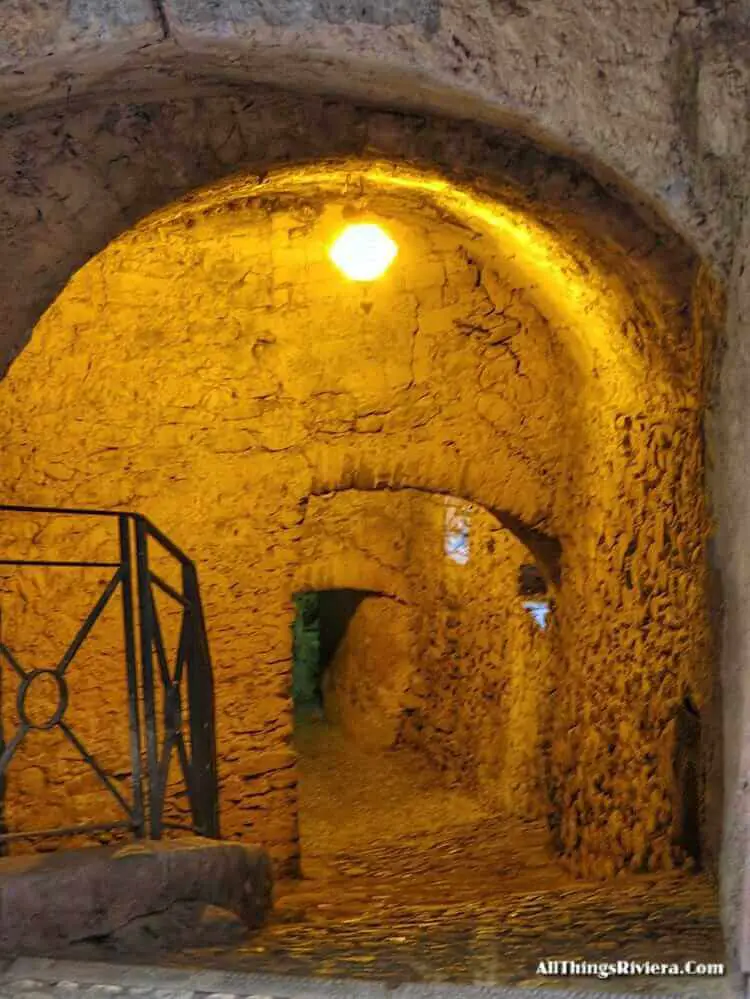

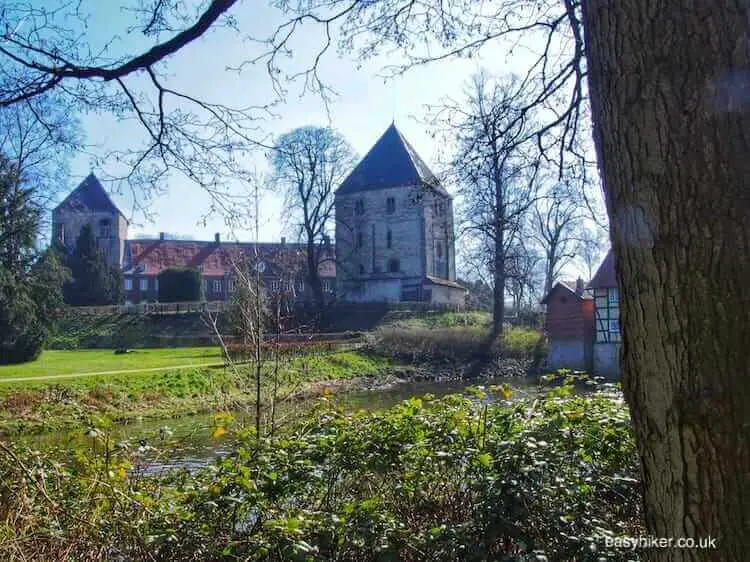
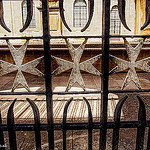

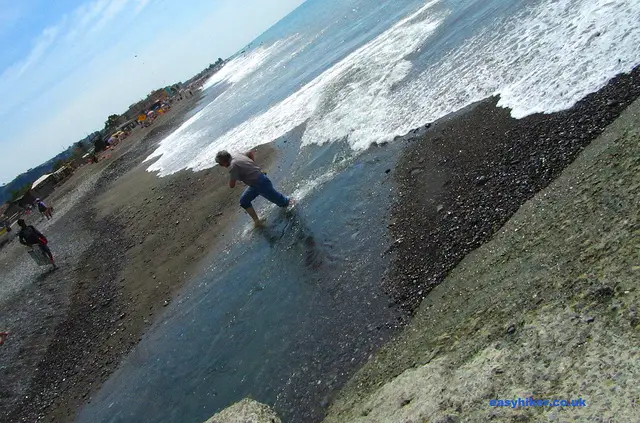


Wow! Sounds like you had a great time indeed! Bravo!
Did a tour of the Val Nervia yesterday; a few practical details for anyone thinking of a day trip.
Having reached Rochetta Nervia by 10, Isolabona was our next port of call by 11. Parked up at Ristorante Terme and walked up to Castelvittorio, reaching there as the midday bells were ringing. Sitting at our table after a damp return downhill by 1.
Fantastic meal took up two and a half hours; all four of us cleared plate after plate, much to the delight of what looked like a father and son serving combination. Amazing value too; a veritable feast for four, with a bottle of wine and tip – €160.
Explored Pigna in attempt to work off some calories before driving on to Apricale and then to our final stop at 6pm in Dolceacqua where the heavens opened.
Having left base camp Antibes 08.40, we were back at 20.25 after a very absorbing day in a land that time has almost forgotten.
Completely endorse your Ristorante Terme recommendation in Pigna.
Gracie Mille.
Grazie mille.
I have used my powers of persuasion to get a friend, newly retired in Grasse, to drive us to the Nervia Valley from Antibes and do a tour around in two weeks time.
From one of your previous posts, I booked Trattoria Terme for lunch – your reputation is on the line!
Ciaran, so very sorry for late reply. Had been asking around for more restaurant recommendations, aside from what we’ve already written in some hiking posts (that is if we didn’t bring a picnic along. In Pigna, we tried Trattoria Terme and were very pleased.)
Some places recommended by friends who have tried them:
1. in Apricale, there’s da Delio, Baci, La Favorita, Apricus, Il Solito Posto
2. In Baiardo, there’s Jolanda.
If you come around and need some more recommendations, don’t hesitate to ask!
Excellent review of the villages.
A few restaurant recommendations and I would be awarding an A+……